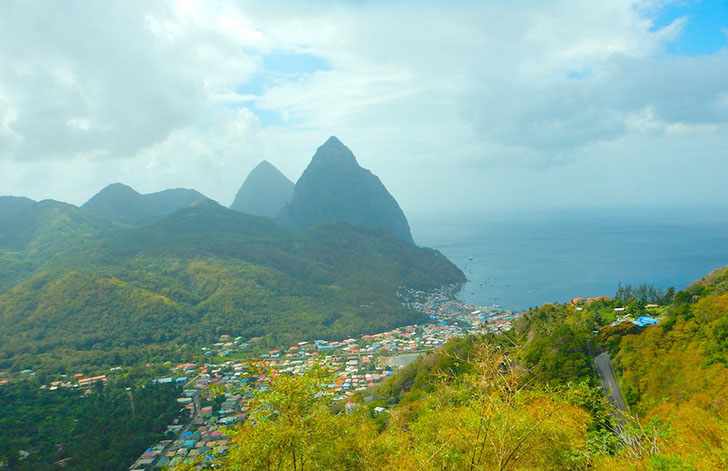
The Pitons, two volcanic formations that jut out of the Caribbean Sea are Saint Lucia’s most famous landmark. Image by Tom Adkinson. |
Not nearly as flashy, but perhaps equally important from a cultural perspective, are the local food stalls in the market of the capital city, Castries. Wandering cruise ship visitors often bypass the market – after all, they can’t take fresh produce back aboard, and they don’t want another trinket – but in doing so, they miss out on meeting Saline and other cooks who dish up tasty plates of island food.
A breezeway lined with folding tables covered with oilcloth tablecloths (the basic decor of a church fellowship hall) offers a choice of food vendors. The place bustles with activity, and the vast majority of the patrons are local, which should tell you that the food is good.
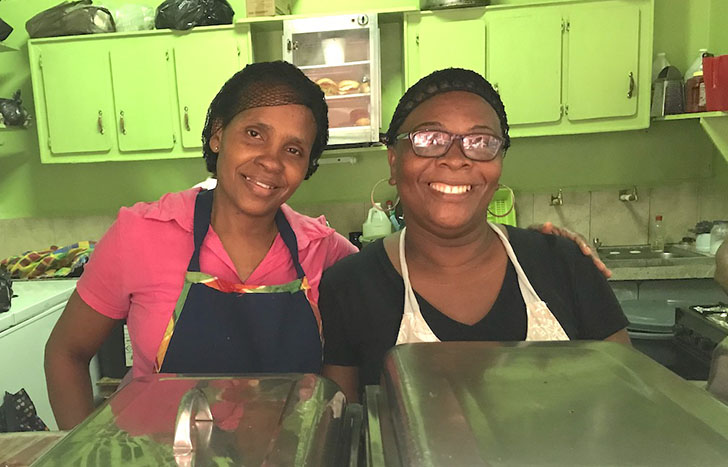
Saline, left, runs the small kitchen in food stall #17 in the primary market of Saint Lucia’s capital. Image by Tom Adkinson. |
Saline’s Place, booth #17, came highly recommended by a street vendor who wove intricate baskets from banana leaves. It might have been impossible to make a bad choice among the numerous mini-restaurants, but Saline’s Place lived up to the basket weaver’s praise.
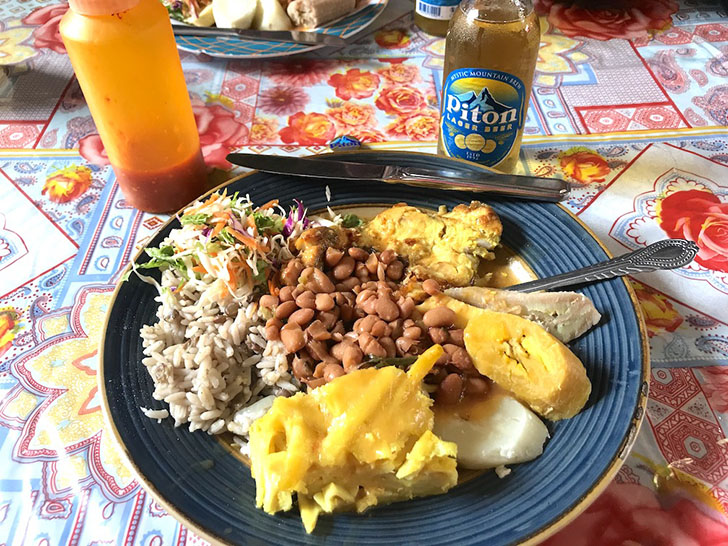
This loaded plate includes fish, beans and rice, salad, plantains and more and costs only $6. Image by Tom Adkinson. |
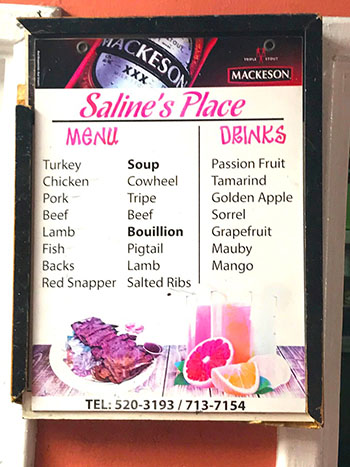
Saline’s kitchen may be small, but the menu presents many choices. Image by Tom Adkinson. |
|
| |
|
Covered chafing dishes hiding an array of items filled the oversized window that looked into the compact kitchen where Saline and a helper hold court. They lifted the covers and piled my plate high after I said I wanted fish and whatever else would fill out a local lunch.
The plate arrived with a hefty portion of grilled snapper, pinto beans and rice, some lettuce and carrot salad, banana, plantain, breadfruit and dasheen (the yellow tuber of the taro plant).
“Sure,” I said, when Saline asked whether I wanted some baked macaroni. “What’s more starch, anyway?”
Saline’s menu has several other protein options, including lamb, pork, beef, turkey and chicken. Soup selections included tripe, which I knew I didn’t want, and cowheel. Cowheel is exactly what the word looks like if you divide it properly – cow heel – and is the core ingredient of a popular Caribbean soup. In concept, it’s oxtail soup made from another part of the animal.
While fancy meals with presentation worthy of Instagram photos probably were nearby in restaurants catering to tourists, my overflowing plate was a treasure of island food and a bargain, too.
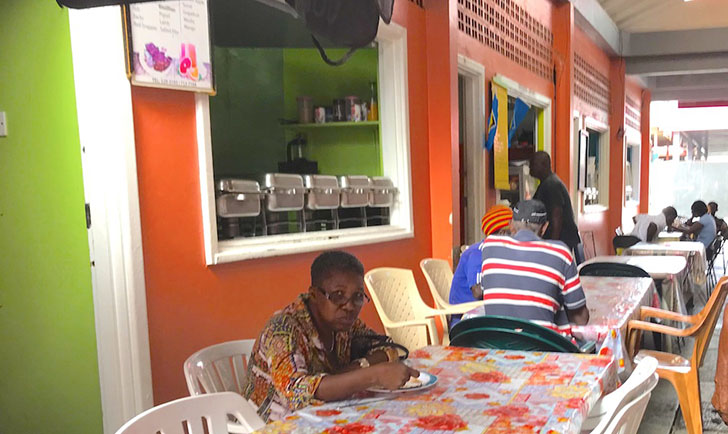
The tables for the market’s “restaurant row” are communal, meaning you eat with locals while eating like a local. Image by Tom Adkinson. |
The price? A whopping $6. Add $2 for a bottle of the local beer, appropriately named Piton, and it was a meal to remember.
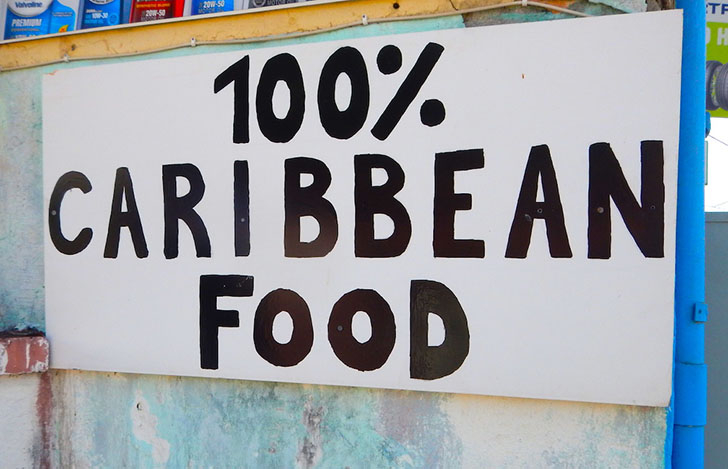
Savvy visitors to the Caribbean seek signs such as this one that lead to memorable meals. Image by Tom Adkinson |
Along with the food and beer came the opportunity to meet a culinary entrepreneur such as Saline, dine with strangers at a communal table and have more than a snapshot of the Pitons to take home from Saint Lucia.
Trip-planning resources: StLucia.org
(Travel writer Tom Adkinson’s new book, 100 Things To Do in Nashville Before You Die, is available at CornersOfTheCountry.com.)
Published February 21, 2020

